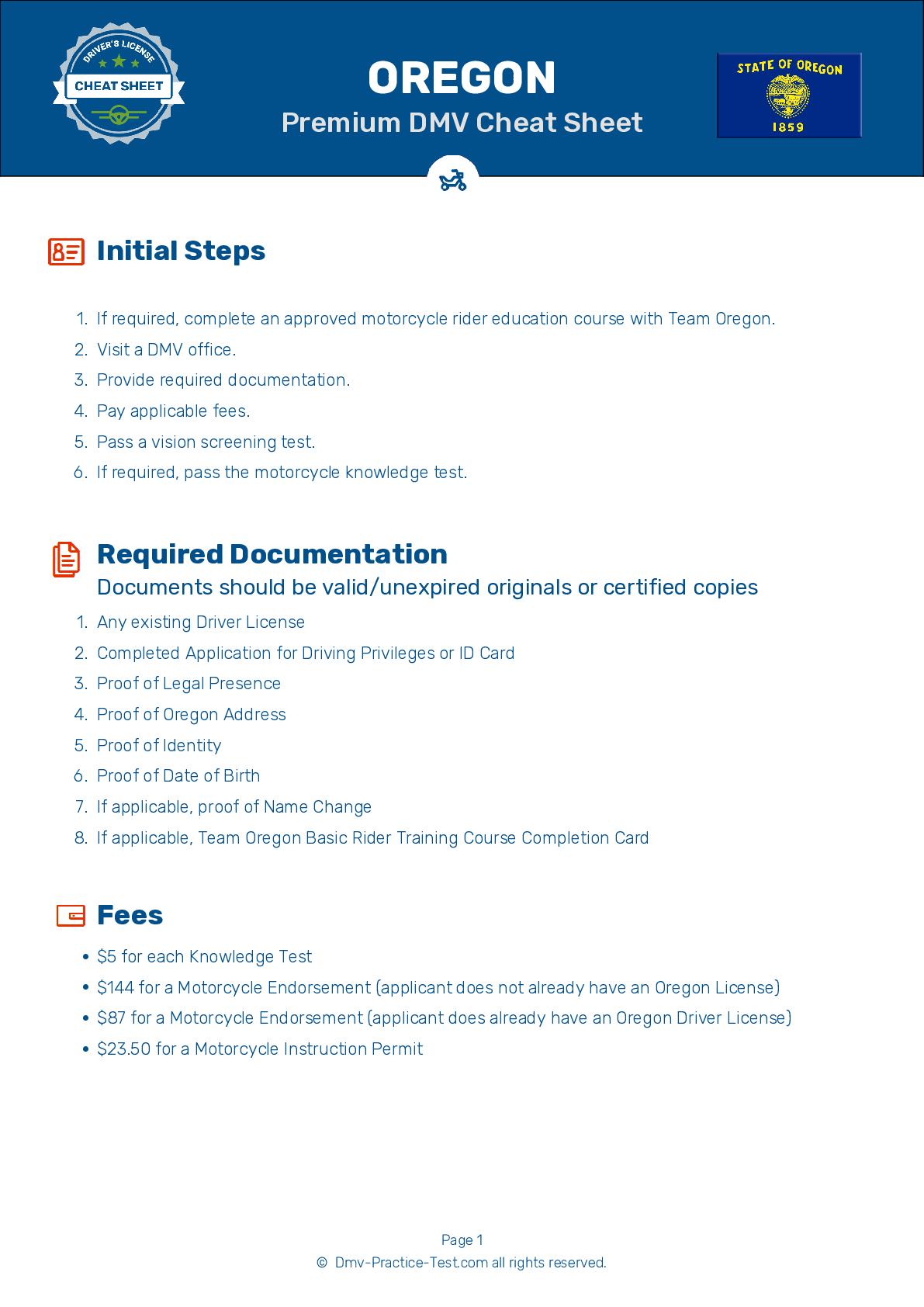Motorcycle Test | License OR 2025 | FREE Online Practice! #6
Take this FREE motorcycle test (license in OR 2025) to check your knowledge of the road rules. To improve your results, download a motorcycle handbook online, study theory, and practice for free on our website. Still worried about how to get a motorcycle license in Oregon in 2025? Check our website for more sample tests, train as much as possible, and boost your grades!
1 . If you find yourself riding alongside another vehicle, you should:
Riding directly next to another vehicle is dangerous because you could be riding in the vehicle's blind spot. Additionally, the vehicle may block your route of escape if another hazard arises. If you find yourself riding directly alongside another vehicle, either speed up or drop back.
2 . Before changing lanes, motorcycle riders should turn their heads to look over their shoulders because:
Like any other vehicle, a motorcycle has blind spots that cannot be seen by a rider using their mirrors. A motorcyclist should always turn their head to check for vehicles or other hazards in their blind spot before changing lanes.
3 . When packing a load on a motorcycle:
Loads should be positioned forward with heavier items toward the front of the load. Loads should be over or in front of the rear axle. Lighter items should be packed behind you.
4 . When an operator's left arm is bent at the elbow and pointing upward, it means the operator:
Instead of mechanical turn signals, operators may use hand signals to indicate turns or stops. If an operator's left arm is bent at the elbow and pointing upward, it means the operator plans to turn right or change lanes to the right.
5 . To be effective, eye or face shield protection must be all of the following, except:
To be effective, an eye or face shield must be free of scratches; be resistant to penetration; allow clear views to both sides; fasten securely; permit air to pass through to prevent fogging; and allow room for eyeglasses or sunglasses, if needed.
6 . When a group of riders is passing another vehicle on a two-lane road, the riders should:
On a two-lane road, a group of motorcyclists should pass one at a time. Each motorcyclist should complete the pass before another begins to pass.
See the exact questions that will be on the 2025 Oregon DMV exam.
99.2% of people who use the cheat sheet pass the FIRST TIME
Jeneen was tired of paying $5/gallon. She got herself a scooter that required the motorcycle license. She studyed the motorcycle test cheat sheet and passed her test the next day!
Christopher tells us how he knew nothing prior to obtaining the motorcycle study guide, and he only got one question wrong because he clicked on the wrong answer by mistake.



